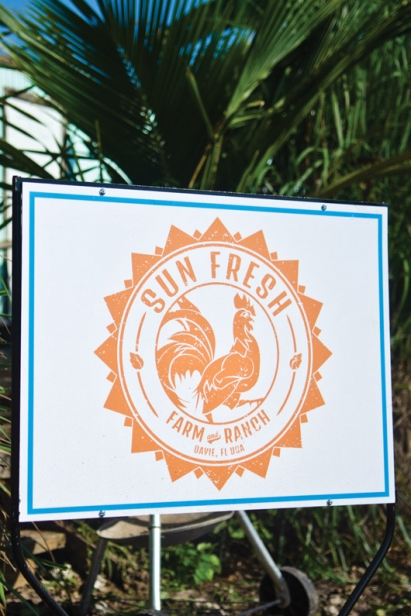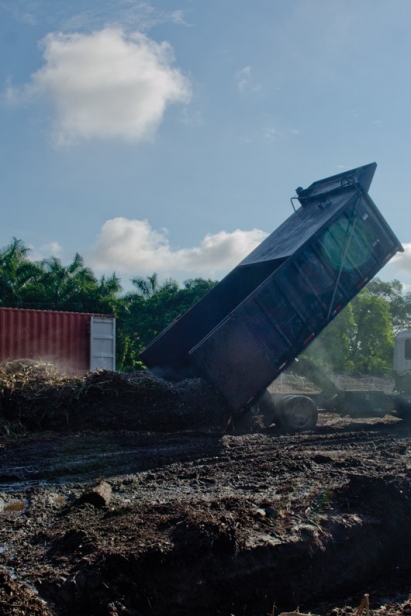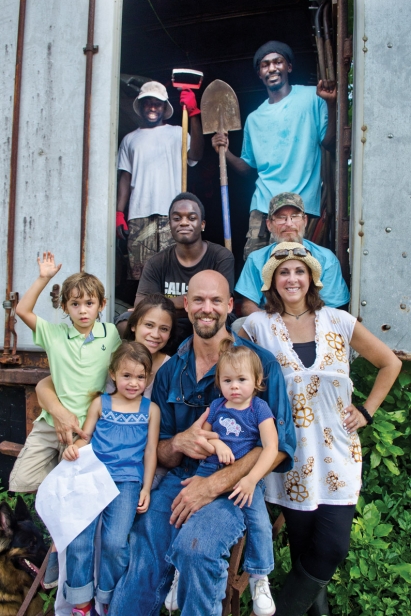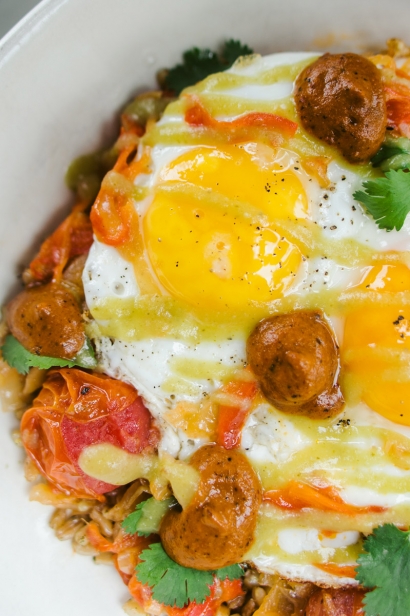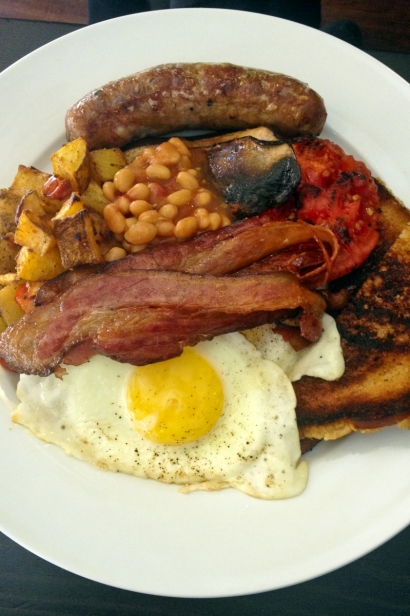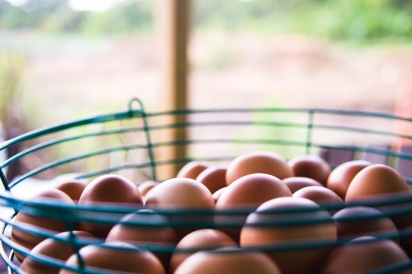Jungle Chickens
What does a South Florida chicken farm look like? At Sun Fresh Farm in Davie, it’s a tropical patchwork of steamy mounds of mulch, lush banana trees, verdant stripes of edible greens, compost piles heaped with watermelon rinds – and noisy chickens foraging underneath the palm trees.
Under the summer sun, Barb Tolbert, a city girl from suburban Chicago, and Jeremy Craw, from Nebraska, who worked in banking and finance, share stories of the farm’s past and present, and their plans for its future.
The 10-acre property was once a palm nursery owned by Barb Tolbert’s aunt, Penny Schick, who was determined to keep the land agricultural and turn the property into a working farm. When Schick died in 2010, Tolbert and her siblings, Rob Matta and Victoria Matta Zonni, decided to keep alive their aunt’s dream of farming. They connected with Jeremy Craw, who was interested in growing produce for his line of pet foods. Soon, they shared a goal to create a truly sustainable farm, raising chickens for eggs and growing some produce. Tolbert, who lives in suburban Chicago, visits periodically and works on sales, while Craw works to methodically convert the property into a different kind of farm.
There are no bucolic rolling hills or quaint red-and-white chicken coops here – this is, after all, flat, subtropical South Florida. Here, Craw and Tolbert are building a system where every element has a specific purpose. The mounds of mulch in the front half of the property are used to build up beds for planting greens. As the mulch breaks down, the soil is enriched. In the back of the property, multiple zones with converted shipping containers provide shelter and a protected place for chickens to lay their eggs. Electric fencing keeps out predators like raccoons, possums, iguanas. In one zone, 50 ducks – Welsh harlequins and khaki Campbells – march around a muddy water hole. Their job is to control snails in the greens and fertilize the beds.
Then there are the chickens, 2,500 of them, in five different areas. They are busy foraging for worms and bugs, and picking clean the past-its-prime produce from Whole Foods Market, dumped in the pasture for feed and compost.
The mulch keeps them entertained, says Craw. “Chickens are omnivores,” he says. “They eat fruits, vegetables, greens, weeds, bugs. They’re microtilling and working the compost better than anything, and they’re not confined. They have space to move,” he says. “They’re expressing their chickenness.”
Craw refers often to Salatin, the American farmer and author whose environmentally friendly farming practices are the model for many who want to follow nature’s template in raising plants and animals. At Sun Fresh, Craw wants to create a sustainable system that starts with the chickens.
“We give scraps. They give us eggs. The soil is enriched, and people are enriched. Our goal is to grow nutrient-dense, healthy eggs that also have to taste better.”
Farm Eggs for Restaurants
Some South Florida chefs have toured the farm, tasted the eggs and put them on the menu. Nicole Votano of the farm-to-counter restaurant Dirt in Miami Beach was the first chef to work with them.
“The flavor is superior to any other local egg I have tried,” says Votano. “Being a veggie-forward concept that serves breakfast, lunch and dinner, we serve a lot of eggs in a variety of styles. We use them in all of our baked goods as well, which absolutely results in a superior taste and texture.” Chef Bradley Kilgore of Wynwood’s critically acclaimed Alter uses their eggs in his Soft Egg dish and their brioche. “The yolk is rich in flavor and color – orange rather than yellow. You know the birds have a healthy diet,” says Kilgore.
At The Seven Dials in Coral Gables, the eggs play a big role in the new Sunday brunch menu, appearing in British-themed scrambles and omelettes, and the Full English breakfast.
Achieving that taste is part of Craw and Tolbert’s vision for the farm: to create a subtropical jungle system with a variety of fruits in the pasture – mulberry, papaya, banana and others – that contribute to the taste of the eggs. “The health of the egg will be determined by what they eat,” he says, defining not just the look of a South Florida chicken farm, but its unmistakable flavor.
Sun Fresh Farm eggs are on the menu at other restaurants, including Essensia, Lido at The Standard, 1Hotel South Beach and Florida Cookery. Consumers can buy eggs at Yellow Green Farmers Market in Hollywood (open weekends) and Pinecrest Gardens Farmers Market on Sundays.
What Kind of Eggs Are You Buying?
After watching documentaries showing appalling conditions in factory farms – chickens crammed into tight, airless spaces where they never see daylight – you may have vowed never to buy eggs from those sources. But the industry doesn’t make it easy for consumers to understand just what kind of eggs they’re getting. Consider what the terms on egg carton labels can mean:
Cage-free – These chickens are uncaged, but have no outdoor access. They live in aviaries in big industrial barns.
Free-range – These uncaged chickens have access to a screened-in porch.
Pasture-raised – These chickens spend most of their life outdoors and have more space.
Organic – These eggs come from free-range chickens that are fed organic feed and receive no hormones or antibiotics.
Vegetarian diet – This term is confusing. Chickens are omnivores that get their protein from worms and bugs in the wild.
Natural, fertile, farm-fresh – These are marketing terms with little meaning.



